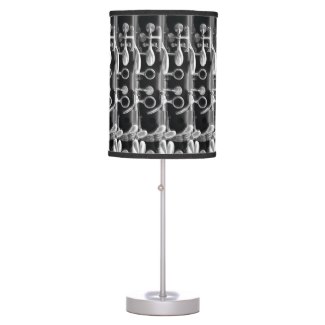Legato and Staccato Definitions
Legato and Staccato are important terms to know to understand how to articulate on clarinet properly. Below, I included the definitions of Legato and Staccato as they relate to clarinet from Harpers Dictionary of Music, Webster’s Ninth New Collegiate Dictionary, and the New Harvard Dictionary of Music.
STRANGER THINGS Season 5 soon
Learn the Stranger Things Lick from
Half-Beard Guy
What can be any "stranger" than than learning a few things from a guy whose beard covers only half the face? Well, learn your D Major 7 broken chord from Chris here at Clarinet-Now.com and follow @ClarinetNow on Youtube to see the series of Stranger Things videos coming out Halloween week.
improve your Clarinet Speeds and Musicality from Bumblebee Loops. Follow these links to get to CAMco.
Harpers Dictionary of Music – Legato & Staccato definitions
Legato – A direction to perform smoothly, without any break between notes. The opposite of legato is STACCATO, calling for sharply detached notes.
Staccato – A direction to perform a note quickly, lightly, and separated from the notes before and after it. Staccato performance in practice reduces the time value of a note by one-half or more; thus a quarter note, performed staccato, lasts only as long as an eighth note, the rest of its value being replaced by silence… Staccato normally is indicated by a dot over or under the note to be so performed; sometimes the abbreviation stacc. appears. A series of dots combined with a slur indicates a kind of half-staccato called PORTATO. A short dash usually indicates a more pronounced staccato, slightly accented.
Webster’s Ninth New Collegiate Dictionary - Legato and Staccato definitions
Legato – in a manner that is smooth and connected (as between successive tones) – used especially as a direction in music.
Legato - a smooth and connected manner of performances (as of music); also: a passage of music so performed.
Staccato – 1. a: cut short or apart in performing; DISCONNECTED b: marked by short clear-cut playing or singing of tones or chords 2: ABRUPT, DISJOINTED.
Staccato Mark: A pointed vertical stroke or a dot placed over or under a musical note to be produced staccato.
The New Harvard Dictionary of Music – Legato and Staccato definitions
Legato – Played smoothly with no separation between successive notes; the opposite of staccato. Although it is sometimes specified by means of a slur, which on wind and bowed instrument calls for no articulation of successive notes (i.e., no tonguing or change of bow), the term itself does not necessarily imply the absence of articulation, but only a very smooth articulation.
Staccato – Detached. Notes to be played in this fashion, marked by a dot (now most common), a solid black wedge, or a vertical stroke above or below, are decisively shortened in duration and thus clearly separated from the note following. A light accent is also implied. The term is thus the opposite of legato.
One common problem with the staccato definition is the absence of the use of the word LIGHT. At least Harper’s used the word “lightly” in its definition. Light and detached is commonly taught with the use of the term staccato.
LEGATO AND STACCATO:
WHY ARE THESE TERMS SO IMPORTANT AND WHAT IS THE TRICK TO ARTICULATING ON CLARINET WELL AND EVENTUALLY FAST?
ANSWER: In legato and staccato articulation, use the SAME kind of light articulating motion!!! Also, if you wish to build speed, concentrate MOSTLY on legato articulation.
Why should I concentrate mostly on legato articulation? Legato articulation is one of the hardest concepts to teach young clarinetists. Getting your tongue to work ultra-efficiently and close to the reed can take a great deal of patience.
Once your legato tonguing speeds increase and increase; eventually, your understanding of the legato tongue motion can be applied to the staccato tongue motion. Staccato tonguing uses the exact “light” technique as legato tonguing; it just “deadens” the sound of the pitch to create “daylight” or silence between the notes.
When you approach speeding up your articulation from the staccato side. In other words, you are putting daylight between all the notes and wish to increase the speed. Often, you are trying to articulate too hard and therefore not able to increase the speed. See, many people spend so much time stopping the pitches in staccato articulation that they cannot increase their speed.
Now, let’s say you really need to put daylight between notes. If you have taught yourself how to correctly do legato articulation, teaching yourself a good staccato articulation is even easier. When you actually stop the vibrations of the reed during the “silent” part of the staccato, it is not a HARD TONGUE MOTION but a very LIGHT TONGUE MOTION.
Click here to visit the Clarinet Articulation main page.


